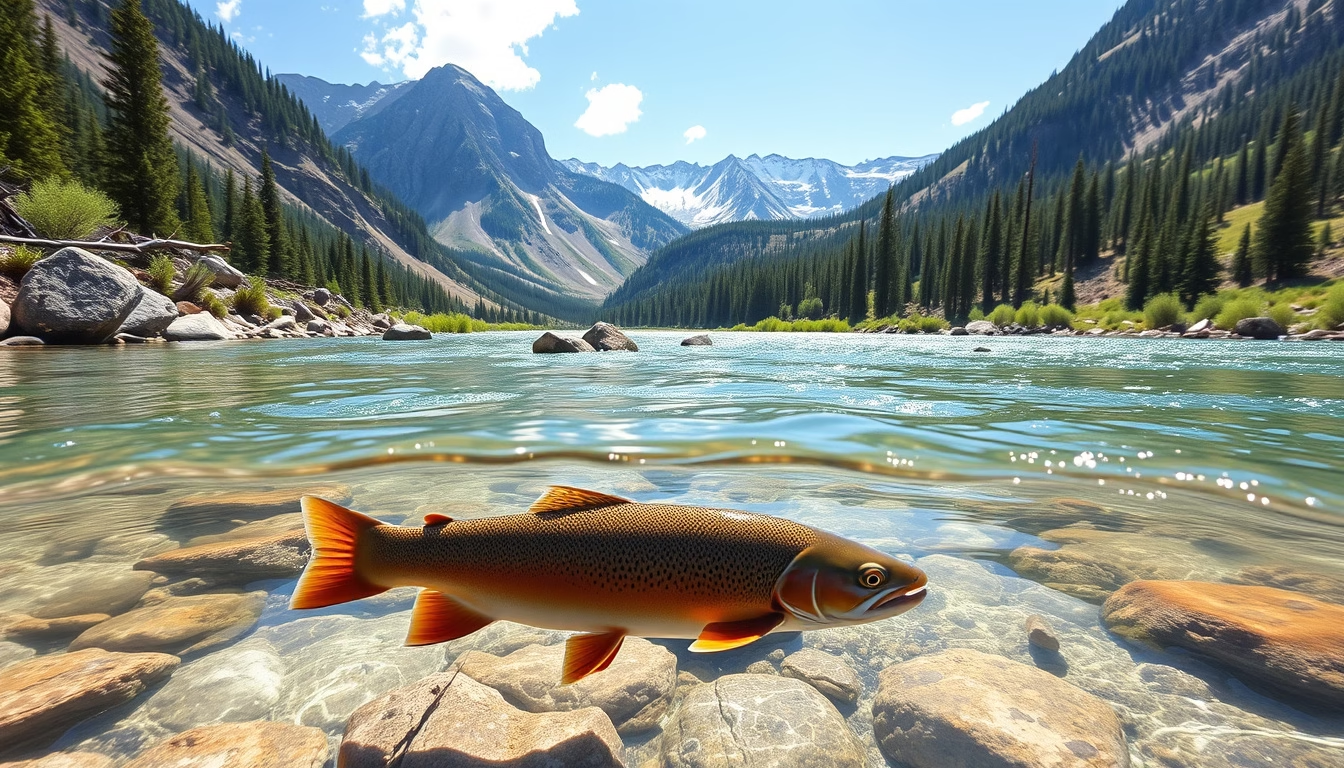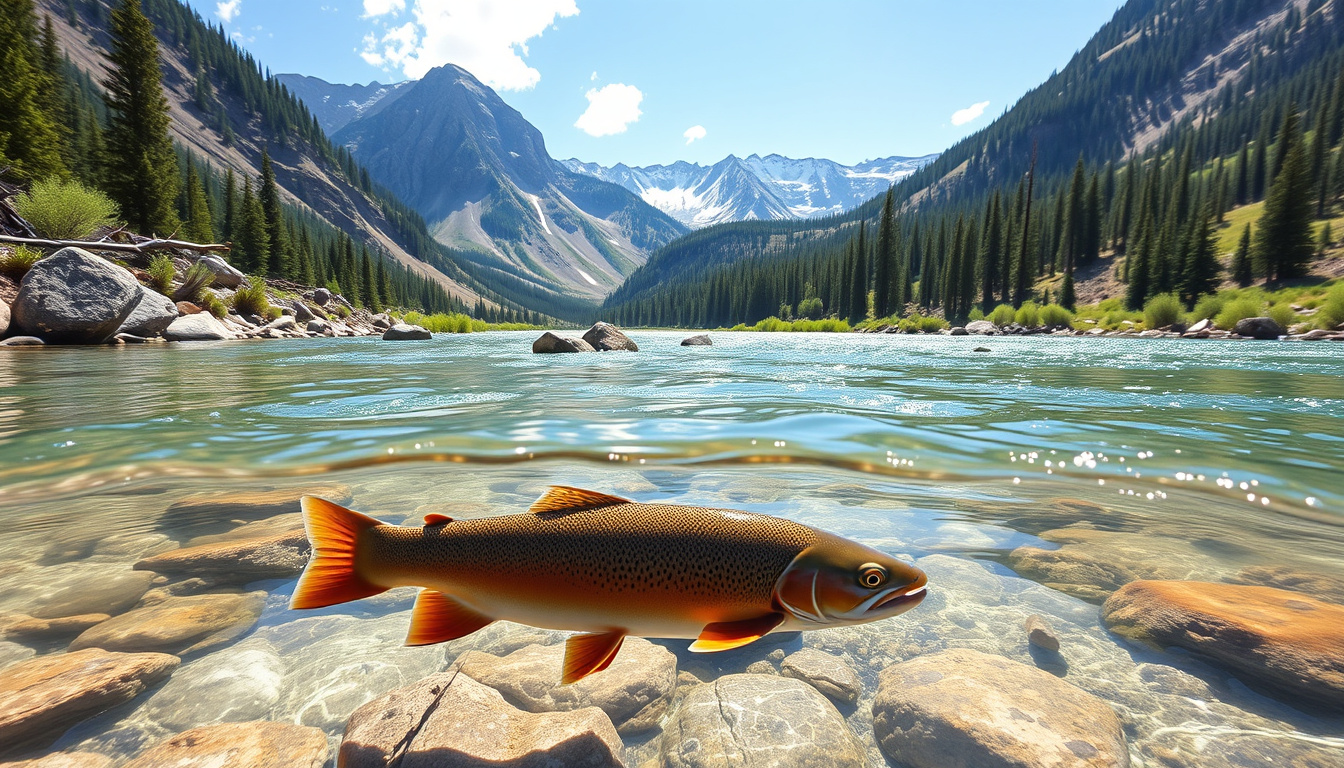
Protecting Lahontan Cutthroat Trout: Urgent Actions Needed Against Habitat Loss and Livestock Grazing
On March 23, 2025 by Andy FordThe Lahontan cutthroat trout (Oncorhynchus clarkii henshawi) is not just any fish—it’s a symbol of resilience and ecological importance in the diverse ecosystems of the western United States.
Once flourishing in a vast network of rivers and lakes, this subspecies now grapples with severe habitat loss primarily due to livestock grazing practices and human encroachment.
As anglers continue to pursue these majestic fish in Pyramid Lake and beyond, it’s critical to recognize the urgency of protecting their habitats.
This article delves into the pressing challenges facing Lahontan cutthroat trout, explores effective solutions for habitat recovery, and emphasizes the vital role of public involvement in ensuring their survival.
The Complete Guide to Minnesota Walleye Fishing

Key Takeaways
- Lahontan cutthroat trout are facing urgent habitat loss due to livestock grazing, necessitating immediate action.
- The BLM’s current strategies may not effectively address habitat degradation, highlighting the need for better solutions.
- Public engagement is crucial in advocating for sustainable management practices that prioritize the recovery of Lahontan cutthroat trout habitats.
1. The Decline of Lahontan Cutthroat Trout: Causes and Consequences
### The Decline of Lahontan Cutthroat Trout: Causes and Consequences
The Lahontan cutthroat trout (Oncorhynchus clarkii henshawi), once prevalent across a vast range of waterways, now finds itself dwindling in population primarily to the historical bounds of the Lake Lahontan region in northwestern Nevada, northeastern California, and southern Oregon.
This majestic species, famed among anglers for its impressive size at Pyramid Lake, faces severe threats stemming from habitat degradation, predominantly due to cattle grazing along critical rearing streams.
A recent video by the Western Watersheds Project sheds light on the dire situation confronting the Lahontan cutthroat trout.
It critiques the current strategies employed by the Bureau of Land Management (BLM) regarding livestock management in these vital habitats.
Instead of taking robust action like reducing livestock numbers or banning grazing in sensitive areas, the BLM is advocating for infrastructure solutions such as constructing water developments and erecting fences, a strategy that may not sufficiently address the core issues at hand.
To tackle these pressing concerns, the Western Watersheds Project has launched a campaign that allows concerned individuals to voice their opinions directly to the BLM.
The call to action includes critical recommendations like reducing or eliminating grazing in trout streams, enforcing livestock reductions in harmful grazing allotments, restoring riparian habitats through natural means, and placing a greater emphasis on the recovery of species over commercial livestock interests.
This initiative not only fosters public engagement but also underscores the importance of collective action in safeguarding the Lahontan cutthroat trout and its aquatic environment.
As the decline of this unique trout species continues, it becomes ever more crucial for the community to advocate for sustainable practices that will ensure the preservation of their habitats for future generations.
2. Effective Solutions for Habitat Recovery: The Role of Public Involvement
Effective habitat recovery solutions rely heavily on public involvement, showcasing the power of community action in conservation efforts.
In the case of the Lahontan cutthroat trout, local residents, anglers, and environmentalists are being encouraged to voice their concerns and influence policy decisions that affect the trout’s habitat.
By rallying behind initiatives led by organizations like the Western Watersheds Project, individuals can advocate for sound grazing management practices that prioritize ecological health.
Engaging in public forums, signing petitions, and attending meetings provide citizens with a platform to express their support for reducing livestock grazing in sensitive areas, which is essential for the restoration of vital ecosystems.
Ultimately, the collective pressure from the public can shape more effective policies and foster a collaborative approach to wildlife management that benefits both the Lahontan cutthroat trout and the surrounding environment.
Archives
Calendar
| S | M | T | W | T | F | S |
|---|---|---|---|---|---|---|
| 1 | 2 | |||||
| 3 | 4 | 5 | 6 | 7 | 8 | 9 |
| 10 | 11 | 12 | 13 | 14 | 15 | 16 |
| 17 | 18 | 19 | 20 | 21 | 22 | 23 |
| 24 | 25 | 26 | 27 | 28 | 29 | 30 |
| 31 | ||||||
